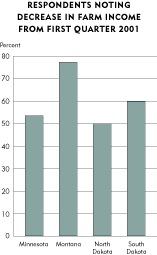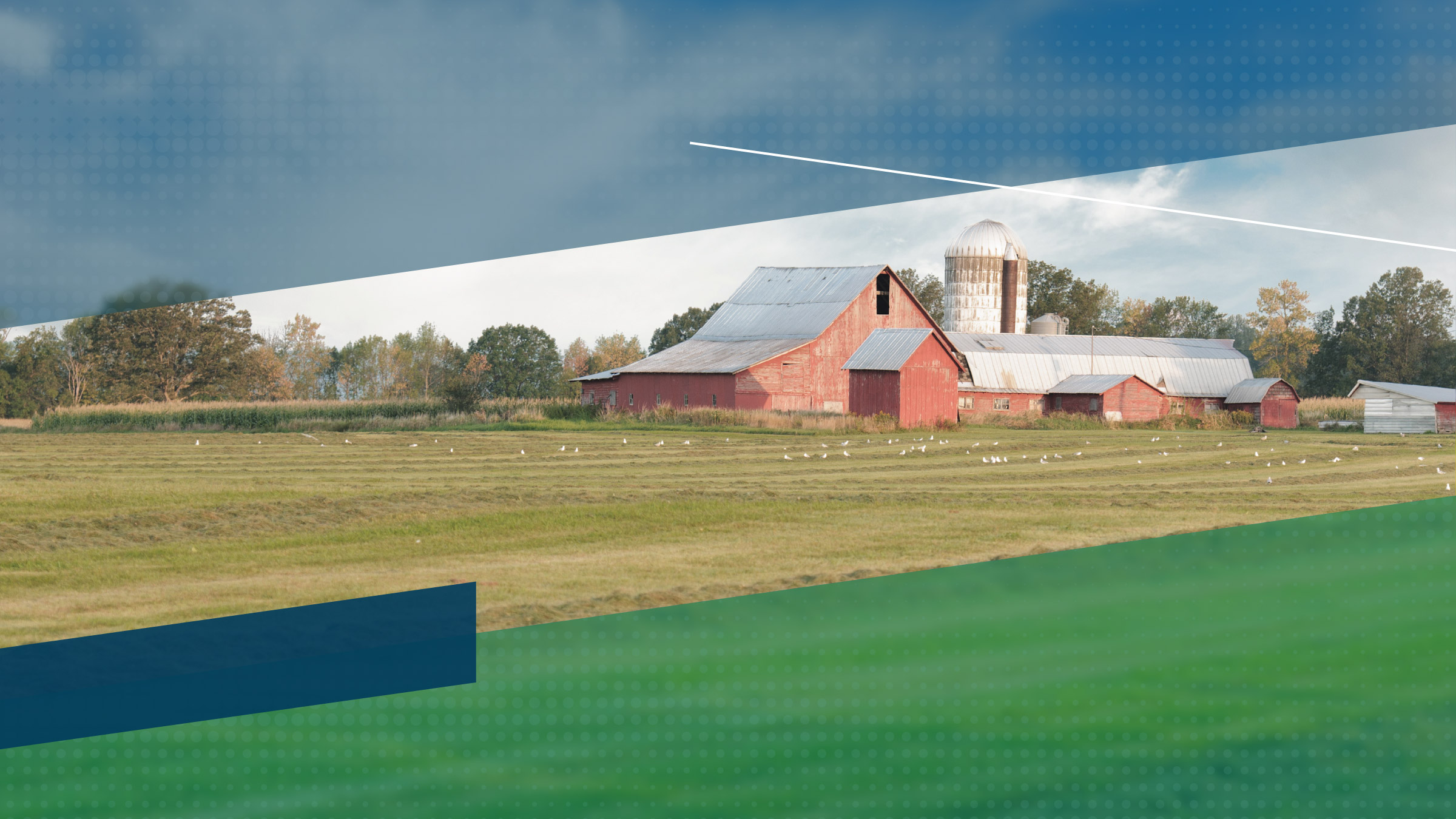Editor's note: To be more consistent with other Federal Reserve districts, the Federal Reserve Bank of Minneapolis changed the timing of this and future surveys and the survey questions from mid-quarter to end of quarter. Most questions were reworded; several were removed, including questions on detailed loan demand; and additional questions on future land prices were added. This survey occurred before passage of the farm bill.
First quarter agricultural financial conditions deteriorated from the same quarter the previous year, according to the results of the Minneapolis Fed's (March 2002) agricultural credit survey. Farm income fell, and producers reduced loan repayments and increased loan extensions. Overall household spending was mixed, but capital spending decreased. On the positive side, loan interest rates are down, while land prices continued to increase. Due to the continued drought, Montana lenders were the most pessimistic about the financial conditions of their agricultural producers.
Farm income and spending
Farm income decreased across the district. "Our customers lost many dollars last year," reported a Minnesota lender. Montana producers were hurt the worst, as 78 percent of respondents reported decreases in farm income. "Severe drought for the last three to four years has depleted inventory and cash reserves," said one Montana lender. Meanwhile, 60 percent of South Dakota respondents and about half of the Minnesota and North Dakota respondents reported decreases in farm income from a year earlier.

Overall farm household spending was mixed. The overwhelming majority of lenders in the Dakotas and Minnesota saw no change in household spending, but 56 percent of Montana lenders reported decreases from a year ago.
Capital spending dropped across the district. About half of the respondents in Minnesota and North Dakota, and three of four in Montana, reported decreases in capital spending. South Dakota lenders were more upbeat about capital spending, as only 30 percent saw declines and 15 percent saw increases. "Tax incentives may result in farmers taking advantage to go ahead with capital spending," reported a South Dakota banker.
Land values, collateral
Land prices in the district continue to increase. "Very willing buyers, both local and out of the area, for any real estate offered for sale," wrote a South Dakota banker. Cropland prices increased over last winter's prices from an average of 1 percent in North Dakota to 7 percent in South Dakota. In addition, pasture land price changes ranged from zero growth in North Dakota to 8 percent in South Dakota over those of a year ago. Collateral levels remained stable, as 80 percent of lenders reported no change in levels of required collateral.
Farm loan demand, bank credit conditions and liquidity
Interest rates for farm loans have decreased nearly 200 basis points from a year ago, which appears to be driving increased demand for loans with spring planting around the corner. Forty-two percent of respondents indicated that loan demand increased from a year earlier compared to only 12 percent who saw decreased loan demand.
Bank credit conditions deteriorated slightly and liquidity remain normal. Thirty-seven percent of lenders experienced a decrease in loan repayments, while only 9 percent reported increases. In addition, a third of respondents reported increases in loan renewals and extensions compared with only a 6 percent decrease. Availability of funds was not a problem: Only 3 percent of lenders reported refusing to make a loan due to shortage of funds.
Outlook
Lenders are pessimistic about the future of their farm customers. "Difficult times are ahead, as few crop-only farmers are able to show projected profitability with average yields," commented a Minnesota banker.
About half the respondents expect farm income to be down over the next three months and the remainder expects stable farm income. The great majority of lenders also expect capital spending to either decrease (42 percent) or stay the same (53 percent) in the second quarter. Only two percent expect increases in loan repayments. The only small piece of optimism from the survey was in land prices, where 25 percent expect continued increases and only 4 percent expect decreases.
| Fixed Interest Rates* | |||
|---|---|---|---|
| Operating | Machinery | Real Estate | |
| 1st Q '01 |
9.8
|
9.7
|
9.1
|
| 2nd Q '01 |
9.3
|
9.2
|
8.6
|
| 3rd Q '01 |
8.9
|
9.0
|
8.5
|
|
4th Q '01 |
8.2
|
8.0
|
7.6
|
|
1st Q '02 |
7.5
|
7.7
|
7.3
|
| * Average of reported rates in mid-November 2002. | |||
Each quarter, the Federal Reserve Bank of Minneapolis surveys agricultural bankers in the Ninth Federal Reserve District, which includes Montana, North Dakota, South Dakota, Minnesota, northwestern Wisconsin and the Upper Peninsula of Michigan. In March, 89 bankers responded regarding conditions during the first quarter 2002.





